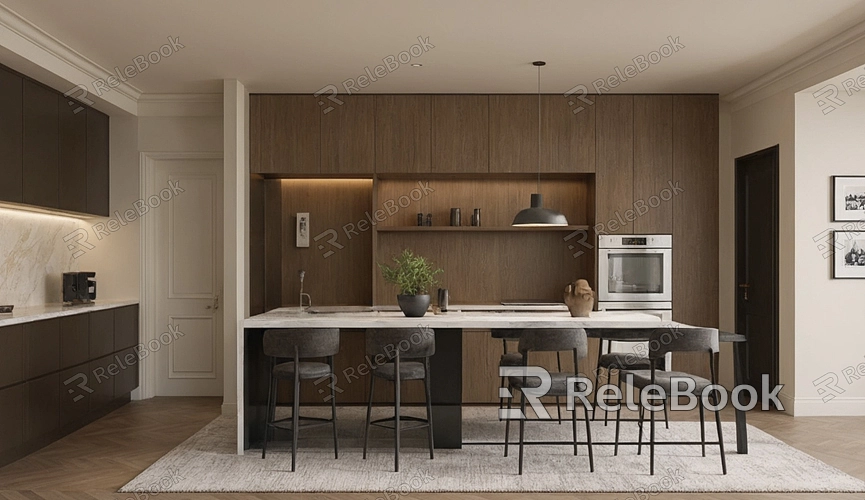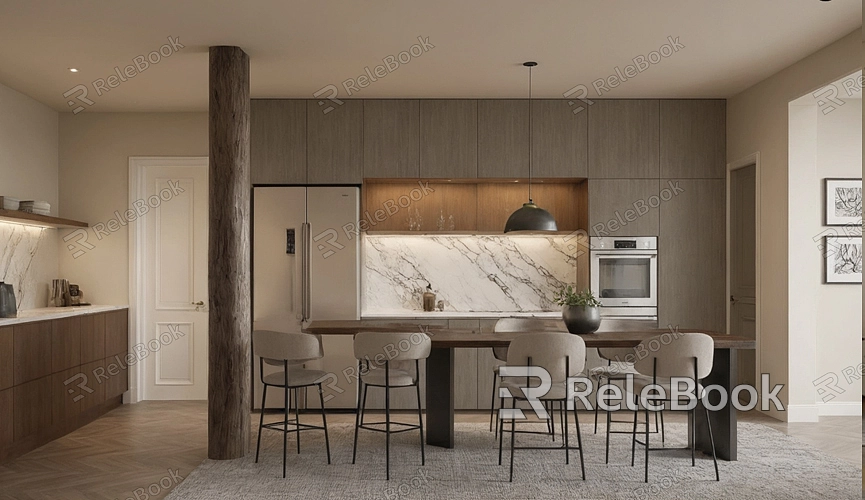How to Soften Edges on 3D Models?
In the process of 3D modeling, the appearance of edges directly affects the visual quality and realism of the model. Sharp edges can make a model appear unnatural, especially in high-quality rendering scenarios. Softenings edges can make the model look smoother and more contemporary, enhancing its overall aesthetic appeal. This article will explore effective methods for softening edges in 3D models to help creators achieve a more refined visual effect in their work.

Understanding the Concept of Edges
In a 3D model, edges are the lines where two faces meet. These edges not only define the shape of the model but also influence the reflection and refraction of light. Sharp edges may create unnatural shadows and highlights, giving viewers a rigid impression. Therefore, softening edges is an essential step in improving visual quality. By properly handling edges, creators can enhance the model's depth and realism.
Using Subdivision Modeling
Subdivision modeling is a common technique that increases the number of polygons to make the model smoother. The core of this technique lies in using subdivision surfaces to transform sharp edges into smooth curves. After creating the model, you can apply subdivision operations to smooth its surface, resulting in natural transitions. This not only improves the model's appearance but also lays a solid foundation for subsequent texture mapping and rendering.
1. Application of Subdivision Surfaces
In most 3D modeling software, the subdivision surface feature is easily accessible. When using this feature, it is essential to note that the degree of subdivision should be moderate; excessive subdivision can complicate the model and increase rendering computation costs. Therefore, it is advisable to adjust the subdivision according to specific needs, maintaining a balance between the model's smoothness and performance.
2. Enhancing Edge Support in the Model
Creating supporting edges during subdivision modeling is another effective method. Supporting edges help maintain the shape of specific areas in the model without deformation due to subdivision. This method is suitable for models that require some sharp angles to be preserved while softening others, ensuring that crucial details are not overlooked.

Applying Normal Maps
Normal maps are another effective technique for softening model edges. By using normal maps, you can simulate detail and texture without increasing polygon counts. Normal maps utilize color information to represent fine variations in the surface, creating realistic shadows and highlights under lighting conditions.
1. Creating Normal Maps
To create normal maps, you can compare high-resolution models with low-resolution ones. Using baking techniques, you can transfer details from the high-resolution model to the normal map of the low-resolution model. This approach not only retains detail but also effectively reduces computation load, enhancing rendering efficiency.
2. Adjusting the Intensity of Normal Maps
When using normal maps, it is also crucial to adjust their intensity appropriately. Excessively strong normal effects can lead to visual confusion, while too weak effects may lose detail. Therefore, creators should flexibly adjust the parameters of normal maps based on the needs of the scene to ensure harmony with the overall effect.
Adopting Smoothing Groups
Smoothing groups are a technique used in modeling software to connect adjacent faces, creating smooth transitions. By assigning different smoothing groups to the model, you can control which edges need softening and which should remain sharp. Effectively using smoothing groups allows you to maintain the shape while achieving an elegant visual effect.
1. Tips for Setting Smoothing Groups
When setting smoothing groups, it is advisable to first analyze the structure of the model. Identify which areas need smoothing and which should retain sharp edges, then group the respective faces. Most modeling software offers intuitive interfaces for setting smoothing groups, making it relatively simple for creators to adjust as needed.
2. Using Mirror Symmetry
When modeling symmetrically, using the mirror symmetry function can simplify the smoothing group setup. By mirroring, you can quickly apply smoothing effects to symmetrical parts of the model, ensuring overall visual consistency. This method not only saves time but also enhances modeling efficiency.
Optimizing Rendering Settings
When rendering the model, appropriate settings can further enhance the softening effect of the edges. By adjusting the position, intensity, and color of the light sources, you can alter the shadow effects on the model's surface, creating a softer visual presentation. Additionally, using anti-aliasing techniques can eliminate jagged edges, making the model appear smoother.
1. Arranging Light Sources Effectively
The arrangement of light sources during rendering is crucial. Choosing the right types and amounts of light sources can effectively reduce the harshness of shadows, creating a softer effect. Using soft light sources can create a more natural lighting environment, helping to soften the edges of the model.
2. Applying Anti-Aliasing Techniques
Anti-aliasing is a technique used to eliminate jagged edges that may appear during rendering. By enabling anti-aliasing options in the rendering settings, you can significantly improve the smoothness of the edges. This technique is especially important when rendering high-quality images, enhancing the overall visual effect.
Choosing Textures and Materials
Selecting appropriate textures and materials also greatly influences the softening of model edges. Certain materials, such as metal and glass, can produce noticeable reflective effects under light, which may accentuate sharp edges. By choosing softer materials or incorporating blurring effects in the texture, you can effectively alleviate this situation, enhancing the overall aesthetic of the model.
1. Experimenting with Different Materials
During the modeling process, experimenting with various materials can help you find the most suitable effect for the model's style. For instance, materials like wood and ceramics often present a soft sheen that can complement softened edges. Trying out different materials can assist creators in discovering new visual effects.
2. Utilizing Texture Details
In texture design, adding intricate details can help enhance the model's realism. By incorporating irregular elements or blur effects into the texture, edges can appear more natural, further reinforcing the softening effect.
Through techniques such as subdivision modeling, normal mapping, smoothing groups, rendering optimization, and material selection, creators can effectively improve the appearance of their models, making them smoother and more natural. By mastering these techniques, you can elevate the quality of your work and enhance viewers' visual experiences. If you wish to access more high-quality 3D models and texture resources, please visit the Relebook website to discover more creative inspiration and possibilities.
FAQ
What specific effects does edge softening have on 3D models?
Softening edges can make a model appear more natural and smooth, reducing rigidity and enhancing overall visual quality.
How do I choose the right method for edge softening in subdivision modeling?
You can choose a combination of methods like subdivision, normal mapping, or smoothing groups based on the model's complexity and the details you want to preserve.
Can normal maps be used alone to achieve edge softening?
Normal maps can effectively simulate edge softening, but they work best in combination with other techniques to achieve the desired visual effect.
How does the choice of light sources during rendering affect edge softening?
The type and position of light sources directly impact the softness of shadows, and a well-arranged lighting setup can enhance the softening effect of edges.
How can material selection assist in edge softening?
Choosing softer surface materials can reduce the sharpness from light reflections, improving the overall softness and visual appeal of the model.

